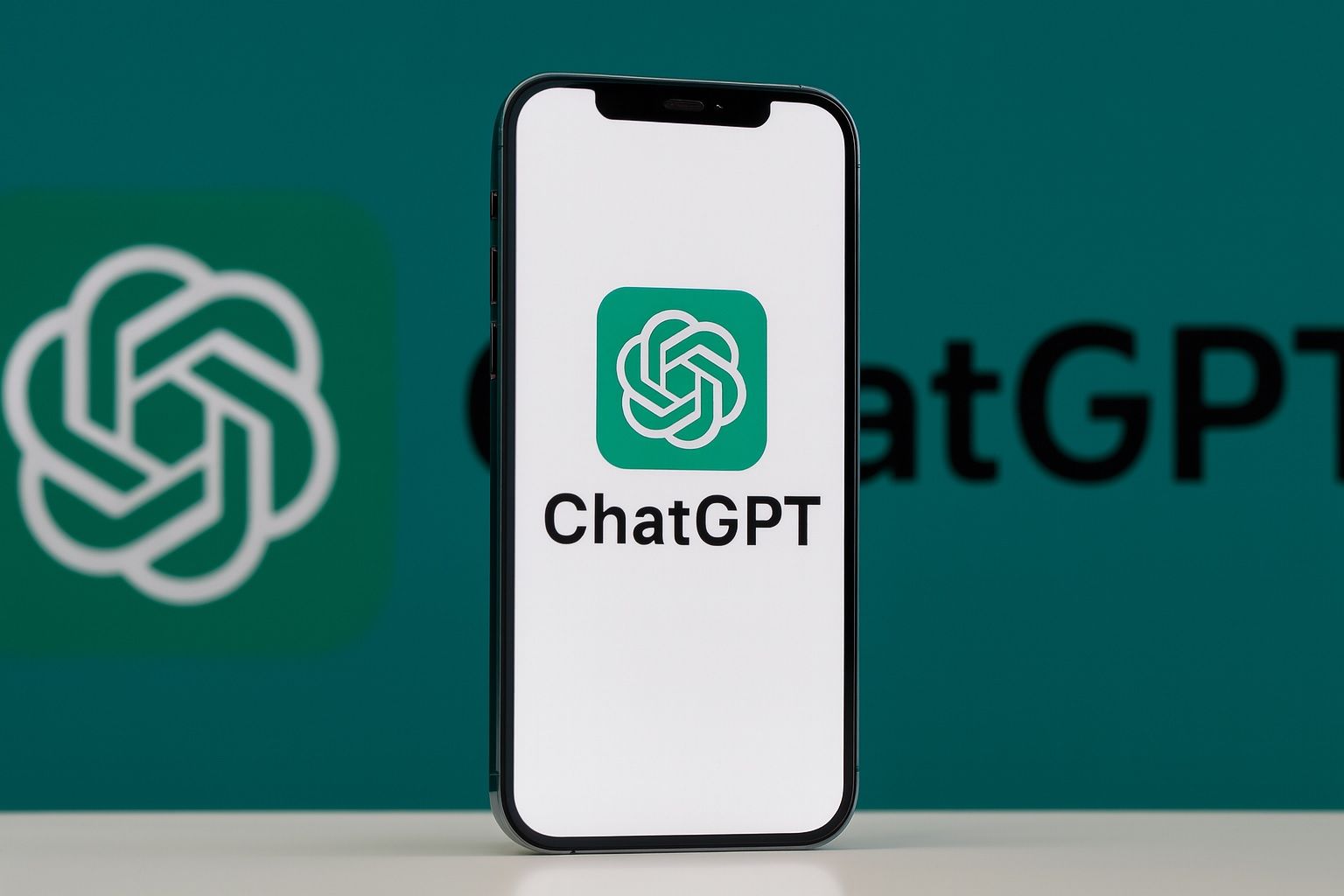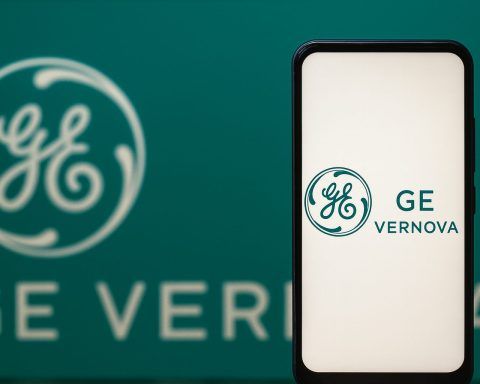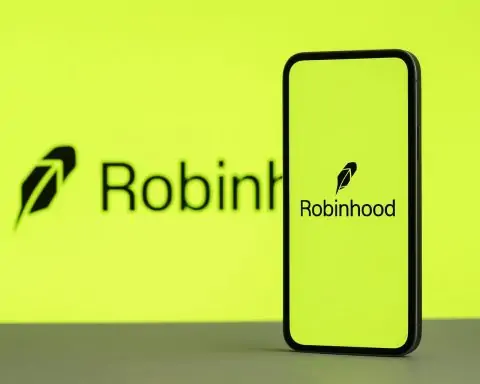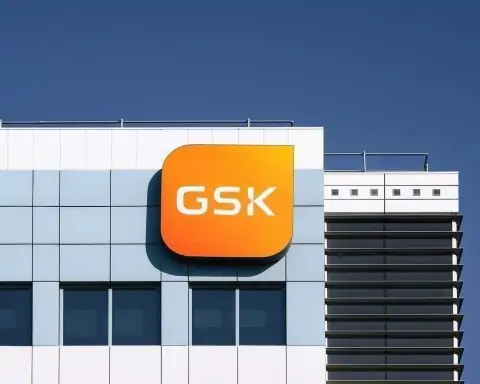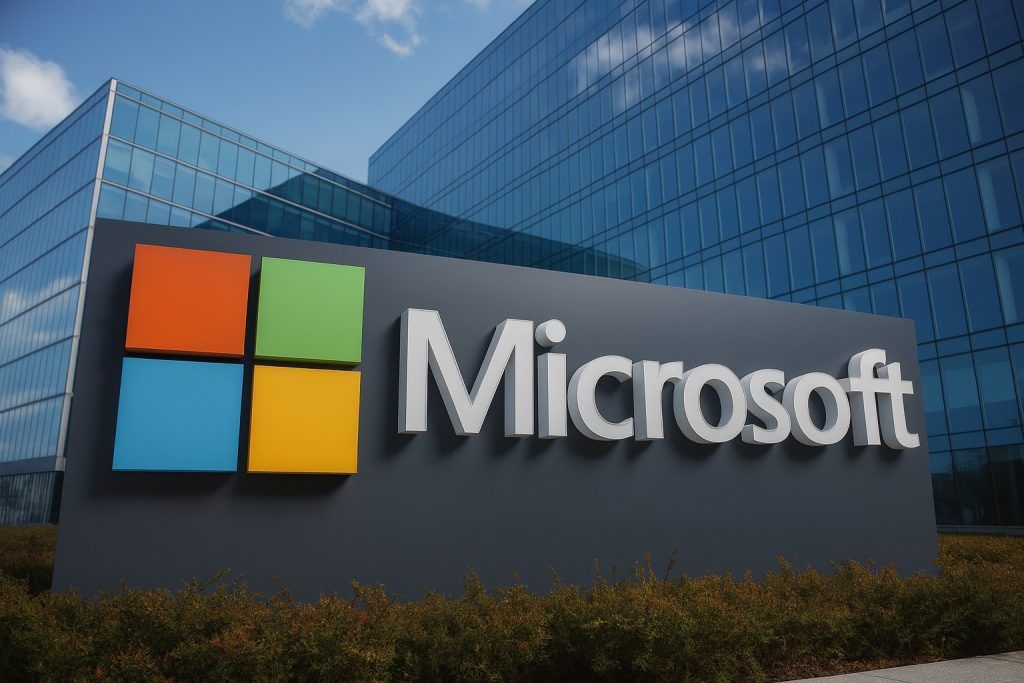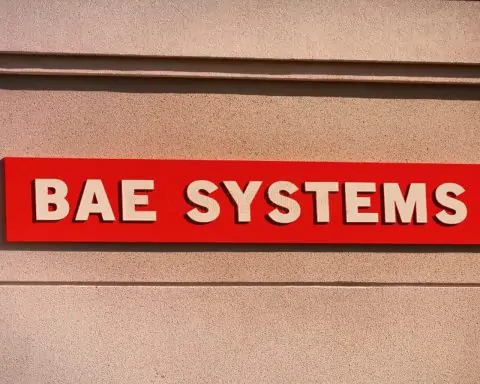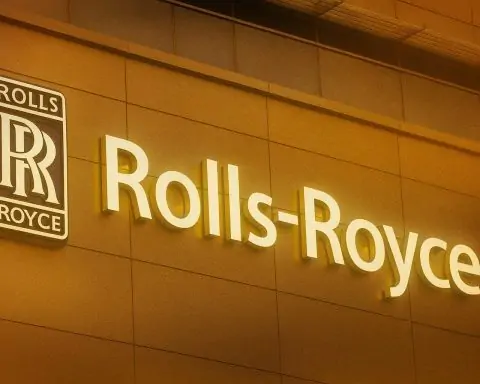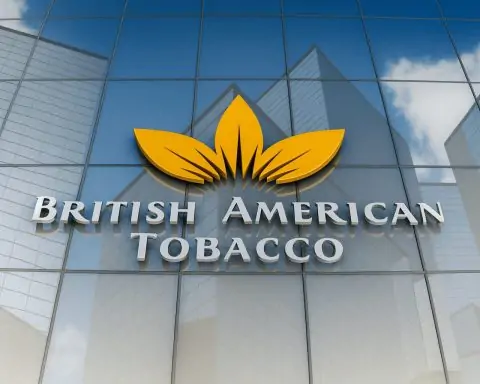- OpenAI finalizes $500 billion overhaul: The ChatGPT creator completed a contentious restructuring, converting its for-profit arm into a Public Benefit Corporation (“OpenAI Group PBC”) while its original nonprofit (now OpenAI Foundation) retains control [1] [2]. The nonprofit holds a $130 billion equity stake – making it one of the world’s richest philanthropic entities – and will get more shares if OpenAI’s value hits certain milestones [3] [4]. Regulators in Delaware and California blessed the plan after a year-long review, ensuring mission-focused oversight remains in place despite the massive valuation [5] [6].
- Microsoft’s stake shrinks (but sweetens): Under a new OpenAI–Microsoft agreement, Microsoft’s ownership is trimmed from ~32.5% to 27% of OpenAI (worth about $135 billion) [7]. In exchange, Microsoft gained extended rights to OpenAI’s tech – even if OpenAI achieves AGI (Artificial General Intelligence) one day [8]. An independent panel will now verify any AGI milestone (no more unilateral “AGI clause”) and Microsoft’s IP licensing is secured through 2032, including post-AGI models [9]. However, Microsoft loses exclusivity in some areas: OpenAI can collaborate with other partners and even use rival clouds for certain products (though it must buy an extra $250 billion of Azure cloud services) [10]. Microsoft also gave up its right of first refusal on future OpenAI cloud deals, formally ending their exclusive compute arrangement [11].
- Race to AGI intensifies: The revamped deal explicitly lets Microsoft “independently pursue AGI” with other partners [12]. In other words, the gloves are off – both companies can now race toward advanced AI on separate tracks. OpenAI is free to partner beyond Microsoft (it already teamed with SoftBank and others on a new AI supercomputing center, and its secret Jony Ive-designed AI device is outside Microsoft’s purview [13]). Observers say the “AGI arms race is on now more than ever” as rivals like Google’s DeepMind/Anthropic, Meta, and new startups all vie to achieve the next breakthrough [14] [15]. Regulators and AI ethicists are watching closely; California’s AG warned he’ll be “keeping a close eye” to ensure OpenAI stays true to its safe AI mission [16].
- Elon Musk cries foul as OpenAI “goes corporate”: OpenAI’s transformation hasn’t been without drama. Co-founder Elon Musk – who left OpenAI in 2018 – sued to block the restructuring, accusing CEO Sam Altman of betraying OpenAI’s original nonprofit purpose [17] [18]. (Musk has since launched his own AI venture, xAI, and a ChatGPT rival “Grok.”) OpenAI’s boardroom turmoil famously exploded in late 2023 when Altman was briefly ousted by the nonprofit board, only to be reinstated after an employee uproar [19]. The new structure aims to prevent such conflicts: the nonprofit foundation holds super-voting power over the for-profit, allowing it to appoint OpenAI’s board and enforce the mission [20] [21]. Altman insists the hybrid model will “keep our mission at the center” even as OpenAI scales aggressively [22] [23].
- Stocks soar on AI bets, IPO on horizon: Investors cheered the OpenAI–Microsoft shakeup. Microsoft stock (MSFT) jumped ~4% on the news, briefly topping $4 trillion in market value for the first time [24] [25]. It closed up 2% at a record high, as analysts hailed Microsoft’s now-secure “7-year runway” with OpenAI’s technology [26]. “Microsoft is becoming more of a cloud infrastructure business and a leader in enterprise AI,” notes Gerrit Smit of Stonehage Fleming, underscoring Wall Street’s enthusiasm [27]. (MSFT shares are up ~60% year-over-year, handily beating the market [28].) However, some caution that AI hype has stretched valuations – at ~29× forward earnings, Microsoft is “priced for a lot of growth,” and any stumble or ballooning AI costs could spark a pullback [29]. OpenAI itself remains private (valued around $500 billion [30]), but Altman now acknowledges an IPO is “the most likely path” long-term given the company’s huge capital needs [31]. In fact, OpenAI has been raising billions (including a massive round reportedly led by SoftBank [32]) to fund global AI projects – Altman revealed an eye-popping $1.4 trillion in future infrastructure commitments worldwide [33]. With the restructuring done, industry watchers foresee a public listing in the coming years, which could become one of tech’s biggest debuts [34].
OpenAI Restructures at $500 B: Nonprofit Control Meets For-Profit Ambition
In a milestone moment for the AI industry, OpenAI has officially restructured itself to unite a half-trillion-dollar for-profit business with its original nonprofit mission. The company announced on Oct. 28 that it “completed its recapitalization, simplifying its corporate structure”, with the nonprofit arm retaining control over the newly created OpenAI Group PBC (Public Benefit Corporation) [35] [36]. Under this novel setup, the OpenAI Foundation (nonprofit) holds a 26% stake valued around $130 billion and can appoint all board directors, effectively steering the ship [37] [38]. Meanwhile, investors and employees own roughly 47%, and Microsoft holds 27% after investing a total of ~$13.8 billion since 2019 [39]. Despite owning a minority of shares, the Foundation’s special voting rights ensure it can override profit motives if necessary to stick to OpenAI’s charter of benefiting humanity [40].
Why the convoluted structure? In simple terms, OpenAI needed money – a lot of it – to compete in the fast-moving AI arena, but wanted to avoid the fate of a typical tech startup beholden to shareholders. Sam Altman and his team pioneered a hybrid model: a capped-profit startup nested under a nonprofit. This model allowed OpenAI to raise billions while promising to prioritize its mission. As Altman quipped, he didn’t want to IPO too early and get “sued by… Wall Street” for pursuing long-term AGI research over short-term profits [41]. By 2023-2024, however, it became clear the demand for capital was exploding – training advanced AI models and building supercomputers is astronomically expensive. OpenAI’s valuation rocketed from ~$30 billion in early 2023 to $300 billion by mid-2025, then $500 billion in a late-2025 share sale [42] [43], making it the world’s most valuable startup. To keep scaling, OpenAI signaled it needed to eventually tap public markets. But first, its quirky governance had to be revamped to reassure big investors (and regulators) that the for-profit side could operate effectively.
Thus came the year-long negotiations with regulators and internal stakeholders to revamp OpenAI’s corporate DNA. Initially, OpenAI’s plan was to remove the nonprofit’s control entirely, but that sparked fierce resistance – not least from Elon Musk, who sued to halt what he saw as OpenAI abandoning its founding principles [44] [45]. The California and Delaware Attorneys General also scrutinized the plan, concerned about how a nonprofit-driven AI lab could morph into a $500 billion juggernaut without losing its public-interest focus [46] [47]. In the end, a compromise was reached: OpenAI would become a Public Benefit Corp (legally bound to consider social impact, not just profits), and the nonprofit Foundation would keep significant control and an equity stake up to $100 billion [48]. Mission accomplished, literally – regulators approved the deal, with California AG Rob Bonta stressing he’ll monitor OpenAI to ensure it adheres to its “charitable mission” and safety obligations [49].
From OpenAI’s perspective, this restructuring unlocks access to “major resources before AGI arrives”, while “keeping our mission at the center,” as board chair Bret Taylor wrote [50] [51]. In practical terms, OpenAI can now raise and spend capital far more freely. Indeed, Altman disclosed on a press call that the company is committing to around $1.4 trillion in AI R&D and infrastructure over the next few years across new data centers and chip deals worldwide [52] – an eye-catching figure that underscores why a future IPO is likely. “Given the capital needs… and the size of the company, [going public is] the most likely path,” Altman acknowledged, though no IPO timeline was announced yet [53]. For now, OpenAI remains technically controlled by a nonprofit board, but with a war chest that any Fortune 500 firm would envy.
Microsoft’s New Deal: $135 B Stake, Fewer Strings Attached
Microsoft, OpenAI’s biggest backer, also emerged with a redefined role. The Seattle tech giant now owns 27% of OpenAI’s for-profit entity – a stake worth roughly $135 billion on paper [54] – and retains an array of commercial privileges, but it had to loosen its grip in key areas. Not long ago, Microsoft’s partnership gave it nearly exclusive rights to deploy OpenAI’s models (like GPT-4) on its Azure cloud and a hefty share of OpenAI’s revenues [55] [56]. A little-known clause even suggested that if OpenAI ever hit the jackpot and achieved AGI, Microsoft’s access to OpenAI’s tech and profit-sharing could be cut off – understandably a point of anxiety in Redmond [57].
The new agreement, finalized alongside the restructuring, resolves that “AGI clause” dispute. Going forward, if OpenAI believes it’s reached AGI, that declaration must be vetted by an independent expert panel (to prevent any premature cutoff) [58]. Microsoft will keep its IP access rights through 2030 or until AGI is verified (whichever comes first) and will even enjoy rights to any post-AGI models through 2032, as long as safety standards are met [59] [60]. In other words, Microsoft secured seven more years of guaranteed access to OpenAI’s crown jewels – a win that J.P. Morgan analysts said gives Microsoft “runway” and confidence in the partnership [61].
However, to get there, Microsoft agreed to more flexibility for OpenAI. Critically, Microsoft no longer has a right of first refusal to be OpenAI’s cloud provider for new ventures [62]. OpenAI can now use other clouds or work with other big tech firms on certain projects – something previously off-limits. (In fact, earlier this year OpenAI announced a venture with Oracle and SoftBank to build a giant AI supercomputer center in Texas [63], a sign it wanted freedom to diversify its infrastructure). The revised deal codifies that OpenAI can “jointly develop some products with third parties” and even release some open-source AI models outside the Microsoft ecosystem [64]. Microsoft’s exclusivity is partly lifted, though Azure remains deeply entwined with OpenAI – not least because OpenAI committed to buy an additional $250 billion in Azure cloud capacity as part of the deal [65] [66]. That eye-popping spend guarantees Microsoft will still heavily profit as OpenAI’s primary cloud partner, even without an exclusive lock.
One notable carve-out in the new terms: Microsoft explicitly excluded OpenAI’s upcoming consumer device from their IP-sharing. OpenAI has been working (with former Apple designer Jony Ive and backing from SoftBank) on a mysterious AI gadget – and under the new deal, the “secret sauce” behind that device won’t be shared with Microsoft [67]. This suggests OpenAI is asserting independence in certain areas, perhaps to explore consumer hardware or other services on its own terms.
For Microsoft, tightening some ties while loosening others was a necessary trade-off. As CEO Satya Nadella recently recounted, even Bill Gates was skeptical at first – warning Nadella that investing in OpenAI “would be like setting $1 billion on fire” back in 2019 [68] [69]. That gamble has clearly paid off: Microsoft’s initial $1B has led to technology that supercharged its Bing and Office products with AI, and its $13B+ total investment is now valued many times over [70]. Crucially, Microsoft gained a key advantage in the cloud race against Amazon and Google by luring OpenAI’s workloads to Azure. The renewed deal ensures Microsoft keeps that advantage through 2032, while giving OpenAI latitude to grow. As one AI commentator put it, Microsoft is now a well-treated “commercial partner” of OpenAI – a major stakeholder with generous rights, but no control over OpenAI’s governance [71] [72]. Microsoft holds no OpenAI board seats and cannot dictate its strategy; it has to trust OpenAI’s Foundation to stay aligned with both mission and profit.
Mission vs. Money: Can a Nonprofit Board Rein in a $500B AI Giant?
A central tension in this saga is whether a nonprofit ethos can coexist with relentless commercial growth. OpenAI’s restructuring is a bold experiment in mixing altruistic governance with Wall Street-scale capital. The OpenAI Foundation’s board – which now includes luminaries like former Salesforce co-CEO Bret Taylor (Chair), tech veterans Adam D’Angelo and Larry Summers, and even a former NSA director [73] [74] – has the legal power to fire the entire OpenAI PBC board if the company veers off its mission. This is not a mere promise; it’s baked into the corporate charter and was a condition of regulatory approval [75]. In theory, if OpenAI’s management chased profit to the detriment of safety or ethics, the nonprofit overseers could intervene decisively.
Skeptics, however, question how robust this check will be when rubber meets road. After all, OpenAI’s own employees and investors hold 47% of equity and stand to gain enormously from aggressive commercialization [76] [77]. Will the Foundation board have the “spine,” as one commentator put it, to pause a lucrative AI product on ethical grounds [78]? Or will pressure to deliver returns override the safety mandate? The structure tries to address this via a Safety & Security Committee that reports to the nonprofit board and can veto deployments on ethical grounds [79]. That committee (led by Dr. Zico Kolter of Carnegie Mellon) is meant to insulate certain decisions from commercial pressure [80]. It’s a novel governance twist, and its true strength will likely be tested in the coming years as OpenAI pushes into ever more powerful AI applications.
Meanwhile, Elon Musk’s loud criticisms continue in the background. Musk, who helped found OpenAI in 2015, has argued that OpenAI has strayed from its original intent by becoming “closed-source” and profit-driven, especially after taking billions from Microsoft. He has filed multiple lawsuits aimed at Sam Altman and OpenAI, ostensibly to hold them accountable to the initial mission [81]. (Observers note Musk’s critique is not entirely disinterested – his own startup xAI is vying to compete in the same arena, and he’s been openly frustrated that OpenAI vaulted ahead in generative AI.) Still, Musk’s concerns about safety and openness echo those of some AI researchers who worry a corporate-controlled AGI could pose risks. OpenAI’s leadership counters that by supercharging the nonprofit’s resources – turning it into “one of the best-resourced philanthropic organizations ever” with $130B to fund AI safety and public-good projects – they are fortifying the mission from within [82]. Indeed, the OpenAI Foundation announced an initial $25 billion fund for health and AI-resilience initiatives (like curing diseases and boosting AI cybersecurity) to ensure OpenAI’s success tangibly benefits society [83] [84].
It’s worth remembering that just two years ago, OpenAI’s governance implosion in November 2023 nearly derailed the company. The nonprofit board’s surprise move to oust Altman (reportedly over transparency and safety disagreements) led to a dramatic backlash – employees threatened to quit en masse and investors were aghast [85]. In a matter of days, Altman was brought back and the board reshuffled. That episode underscored the challenges of a nonprofit controlling a for-profit startup: misalignment and miscommunication can turn explosive. The new structure, formalized now with clear rules and a unified board, is designed to avoid “fragmented governance” and ensure everyone is on the same page [86]. The takeaway: OpenAI is betting it can pursue profit and breakthrough innovation without abandoning its founding ideal of safe, broadly beneficial AI. If it succeeds, it could set a template for other mission-driven tech firms. If it fails, the world’s most valuable AI lab could either sputter under internal conflict or morph into exactly the kind of unrestrained AI powerhouse it once vowed to never become.
An AI Arms Race Accelerates – and Big Tech Braces
OpenAI’s restructuring and the updated Microsoft pact don’t just affect those two companies – they send shockwaves across the AI landscape. By loosening the exclusivity of the OpenAI-Microsoft relationship, the deal tacitly acknowledges that OpenAI will collaborate with others: potentially hardware makers, cloud rivals, even governments. For instance, OpenAI can now provide its AI services to U.S. government agencies using any cloud, not only Microsoft’s [87] – a move that could open doors to contracts with the defense sector or others that might prefer Amazon or Google Cloud. OpenAI is effectively free to court new partners and investors, which could include other tech giants that were previously on the sidelines. This more open stance might explain why SoftBank and other big funds poured money into OpenAI recently [88], and why rumors swirl about projects like the Jony Ive-designed AI device (which, some speculate, Apple might eventually get involved in). Competition will only heat up: Google, for one, has heavily backed Anthropic (another AI startup) and is advancing its own DeepMind Gemini AI, aiming to rival OpenAI’s GPT models. Amazon has invested in Anthropic as well. And Meta is pursuing a strategy of open-sourcing advanced AI models to leapfrog its peers. In short, every major player is racing to build or ally with the most powerful AI – often dubbed the quest for AGI (Artificial General Intelligence), the point at which AI systems might match human cognitive abilities.
In this context, the OpenAI-Microsoft changes signal a new phase of the “AGI arms race.” Microsoft essentially declared it will race OpenAI (and others) to AGI if it can – Nadella even reorganized Microsoft’s leadership in October to focus on “our highest ambition work” of AI and cloud, freeing himself to “build the new frontier” in AI [89]. OpenAI, flush with capital, is simultaneously doubling down on research and global expansion (setting up offices in new regions and massively scaling infrastructure). All players are upping the ante. “The AI industry is at a major crossroads,” noted one analysis, with companies pouring talent and treasure into achieving breakthroughs [90]. This rush has real economic stakes: the first to deploy truly transformative AI systems could capture billions in market value and shape the direction of technology for years to come.
Of course, an arms race mentality in AI raises concerns. If everyone is sprinting toward AGI, who’s hitting the brakes to check for safety? This is why regulators, from the White House to the EU, are closely watching moves like OpenAI’s. The fact that OpenAI remains under nonprofit oversight was likely key to regulators allowing this restructure – it provides a veneer of public accountability. And Microsoft, by accepting limits (like the independent AGI review panel), signaled it won’t seek unchecked dominance either. Yet the rivalry is undeniable. As an AI ethics researcher warned, “we now need a parallel resilience layer for AI” much like cybersecurity for the internet [91]. In other words, as companies race ahead, society must ensure guardrails are in place. OpenAI’s own charter says AGI should benefit “all of humanity” [92], a goal that will require unprecedented cooperation even amid fierce competition.
One thing is certain: the market believes AI is the future, and is rewarding those at the forefront. The morning after OpenAI’s restructure was announced, Microsoft’s stock jumped as investors digested the news that its partnership was not only secure but expanded [93]. “Microsoft can now count on 7 years of runway” with OpenAI’s tech, J.P. Morgan analysts wrote approvingly [94]. Microsoft’s market cap briefly breached $4 trillion – a historic first – before settling around $3.99T, reflecting how central AI is to its growth story [95]. Over at Google, shares of parent Alphabet have also climbed in 2025 as it rolled out new AI features and investments, though Google’s stake in Anthropic is much smaller scale compared to Microsoft’s OpenAI deal. Nvidia, the chipmaker powering most AI models, has seen its valuation soar above $1 trillion this year on insatiable demand for AI hardware. Simply put, the prospect of advanced AI is driving a tech stock boom reminiscent of the dot-com era – albeit with far larger numbers.
Outlook: High Hopes and Big Risks in the Next Chapter
As OpenAI enters this new chapter, experts are split on what comes next. Optimists argue that aligning a $500 billion enterprise with a nonprofit guardian could be the best of both worlds: OpenAI now has the resources to pursue world-changing AI breakthroughs, while its structure (if honored) ensures it won’t sacrifice safety or equity in the process. They point to the OpenAI Foundation’s war chest for global good projects as a sign that success will indeed funnel back into society [96] [97]. With Microsoft’s support and a broadening ecosystem of partners, OpenAI could accelerate progress on everything from medical research to education – all using AI. Even the prospect of an OpenAI IPO excites many on Wall Street; some foresee it becoming a “meme stock” phenomenon given the company’s fame, though likely not until markets are ready and the company can show more than just hype [98].
Realists and skeptics, on the other hand, caution that challenges loom. OpenAI is burning cash (reportedly losing money despite its valuations) [99], and scaling AI models gets exponentially harder and costlier each year. The $1.4 trillion in spending Altman outlined will test even the most patient investors – and if the AI boom falters or a better algorithm emerges elsewhere, OpenAI could find itself overextended. There’s also the perpetual risk of ethical or legal blowback. Already, OpenAI and Microsoft face lawsuits from authors and artists over AI content generation [100] [101]. Governments may impose new rules on AI models, impacting how OpenAI can operate. And internally, keeping a balance between profit-driven investors and a mission-driven board will require deft leadership; any repeat of the 2023 governance crisis could spook stakeholders and the public.
For now, though, OpenAI and Microsoft are basking in a moment of validation. Satya Nadella can point to the OpenAI partnership as a masterstroke that helped make Microsoft a leader in the AI era – turning that “$1 billion on fire” into a stake worth 135 times more [102]. Sam Altman can claim he found a way to have his cake and eat it too: raising unprecedented sums of money while ostensibly keeping true to OpenAI’s founding ideals. The two companies have reaffirmed their commitment to work together, even as they grant each other the freedom to explore AI separately.
The next milestones on the horizon? OpenAI is expected to continue rolling out advanced models (GPT-5 is in the wings) and that mysterious AI hardware device in collaboration with Jony Ive and SoftBank. Microsoft, for its part, will integrate OpenAI’s tech deeper into Windows, Office, and its cloud, while perhaps pursuing its own AGI research (via its internal AI teams or investments in others). Regulatory spotlight will remain intense – Altman and other AI CEOs have been frequenting Washington to discuss safe AI development. And the public’s comfort with AI is still fragile; each new ChatGPT capability or controversial use of AI will influence how much society trusts players like OpenAI.
In sum, OpenAI’s half-trillion-dollar restructuring marks a turning point. It solidifies OpenAI’s status as a juggernaut at the center of the AI revolution, and it redefines the boundaries of Big Tech collaborations. As one analyst put it, “The close of our recapitalization gives us… an updated corporate structure to ensure progress serves everyone.” [103] The world will be watching to see if that promise holds true – and whether this grand experiment of nonprofit stewardship over a for-profit AI colossus can indeed “benefit all of humanity” in the end [104].
Sources:
- New York Times / AP News – “OpenAI Restructures as For-Profit; Microsoft Deal Revised” [105] [106]
- The Verge – “OpenAI completed its for-profit restructuring — and struck a new deal with Microsoft” [107] [108]
- Business Insider – “OpenAI’s new agreement with Microsoft gives the AI startup more freedom” [109] [110]
- OpenAI Blog (B. Taylor) – “Built to benefit everyone” [111] [112]
- TS2 Technology – “How to Invest in OpenAI in 2025” [113] [114]; “Microsoft Soars Past $4 Trillion on AI Deals” [115] [116]
References
1. www.theverge.com, 2. economictimes.indiatimes.com, 3. www.theverge.com, 4. www.businessinsider.com, 5. www.theverge.com, 6. economictimes.indiatimes.com, 7. www.theverge.com, 8. www.theverge.com, 9. www.theverge.com, 10. www.businessinsider.com, 11. www.businessinsider.com, 12. www.businessinsider.com, 13. www.theverge.com, 14. www.theverge.com, 15. www.theverge.com, 16. economictimes.indiatimes.com, 17. www.theverge.com, 18. www.businessinsider.com, 19. www.businessinsider.com, 20. medium.com, 21. medium.com, 22. openai.com, 23. openai.com, 24. ts2.tech, 25. www.businessinsider.com, 26. economictimes.indiatimes.com, 27. ts2.tech, 28. ts2.tech, 29. ts2.tech, 30. ts2.tech, 31. economictimes.indiatimes.com, 32. ts2.tech, 33. economictimes.indiatimes.com, 34. ts2.tech, 35. openai.com, 36. economictimes.indiatimes.com, 37. medium.com, 38. medium.com, 39. medium.com, 40. medium.com, 41. ts2.tech, 42. ts2.tech, 43. ts2.tech, 44. www.theverge.com, 45. www.businessinsider.com, 46. www.theverge.com, 47. economictimes.indiatimes.com, 48. www.theverge.com, 49. economictimes.indiatimes.com, 50. openai.com, 51. openai.com, 52. economictimes.indiatimes.com, 53. economictimes.indiatimes.com, 54. www.theverge.com, 55. www.businessinsider.com, 56. www.businessinsider.com, 57. www.businessinsider.com, 58. www.businessinsider.com, 59. www.theverge.com, 60. economictimes.indiatimes.com, 61. economictimes.indiatimes.com, 62. www.businessinsider.com, 63. economictimes.indiatimes.com, 64. www.businessinsider.com, 65. www.theverge.com, 66. www.businessinsider.com, 67. www.theverge.com, 68. www.businessinsider.com, 69. www.businessinsider.com, 70. medium.com, 71. medium.com, 72. medium.com, 73. medium.com, 74. medium.com, 75. medium.com, 76. medium.com, 77. medium.com, 78. medium.com, 79. medium.com, 80. medium.com, 81. www.businessinsider.com, 82. www.businessinsider.com, 83. www.theverge.com, 84. openai.com, 85. www.businessinsider.com, 86. medium.com, 87. www.businessinsider.com, 88. ts2.tech, 89. ts2.tech, 90. www.theverge.com, 91. openai.com, 92. openai.com, 93. ts2.tech, 94. economictimes.indiatimes.com, 95. ts2.tech, 96. www.theverge.com, 97. openai.com, 98. ts2.tech, 99. economictimes.indiatimes.com, 100. www.businessinsider.com, 101. www.businessinsider.com, 102. medium.com, 103. openai.com, 104. openai.com, 105. economictimes.indiatimes.com, 106. economictimes.indiatimes.com, 107. www.theverge.com, 108. www.theverge.com, 109. www.businessinsider.com, 110. www.businessinsider.com, 111. openai.com, 112. openai.com, 113. ts2.tech, 114. ts2.tech, 115. ts2.tech, 116. ts2.tech
